
Special Features of
AT WISE ENGLISH
Elementary
For IELTS band < 3.0
Start getting familiar, learning grammar and basic vocabulary.
ielts 1
IELTS entry level: 4.0 – 4.5
Target output: 5.0 – 5.5
Focus on improving the 4 skills according to IELTS test structure and practice for the IELTS exam.
ielts 3
Input IELTS: 6.0 – 6.5
Output: 7.0+
Practice mock tests and enhance your band score to 7.0+.

Pre IELTS
Input IELTS: 3.0
Output: 4.0 – 4.5
Enhance grammar, vocabulary, and pronunciation. Begin IELTS preparation with all 4 skills.
ielts 2
Input IELTS: 5.0 – 5.5
Output: 6.0 – 6.5
Study advanced knowledge in all 4 skills.
Continue practicing and preparing for the IELTS exam in all 4 skills.
Improve Pronunciation: Master All 44 Sounds in English
For IELTS Band <3.0: Begin with foundational grammar and vocabulary learning.
For IELTS Entry Level 3.0, Target 4.0-4.5: Enhance grammar, vocabulary, and pronunciation. Begin training in all four IELTS skills.
With an IELTS Foundation of 4.0-4.5, Target 5.0-5.5: Focus on improving all four skills aligned with the IELTS test structure.
With an IELTS Foundation of 5.0-5.5, Target 6.0-6.5: Focus on advanced knowledge across all four IELTS skills.
With an IELTS Foundation of 6.0-6.5, Target 7.0: Practice test-taking strategies and work on improving all skills to achieve a band score of 7.0+.
Practice Mock Tests Like the Real Exam
Practice Mock Tests Like the Real Exam

Session | Content | Material |
1 | Introduction to each other Introduction about WISE Methods: – 6-step vocabulary learning – Transcribing | Slides, notes |
2 | 1A– Vocabulary: Family 1E– Word Skills: Singular and plural nouns 1F– Reading: Sibling rivalry | Solutions (P.8 – P.13 – P.14) |
3 | 1B- Grammar: Present simple: Affirmative 1D– Grammar: Present simple: Negative and interrogative) 1H– Writing: A personal profile | Solutions (P.10 – P.12– P.17) |
4 | 1C- Listening: Spelling and pronunciation 1G- Speaking: Describing people Tactics for Listening: Unit 10: The Family | Solutions (P.11 – P.16) Tactics for Listening (P.38-41) |
5 | 2A– Vocabulary: Daily routine 2E– Word Skills: Prepositions of time 2F– Reading: Dangerous journeys | Solutions (P.18 – P.23 – P.24) |
6 | 2B- Grammar: Have to 2D– Grammar: Adverbs of frequency; question words 2H– Writing: An announcement | Solutions (P.20 – P.22 – P.27) |
7 | 2C- Listening: Unusual schools 2G- Speaking: Giving advice Tactics for Listening: Unit 15: Vacations | Solutions (P.21 – P.26) Tactics for Listening (P.58-61) |
8 | 3A– Vocabulary: Clothes 3E– Word Skills: Adjectives: Opposites 3F– Reading: Teenage pressures | Solutions (P.30 – P.35 – P.36) |
9 | 3B- Grammar: Present continuous 3D– Grammar: Contrast: present simple and present continuous 3H– Writing: An email | Solutions (P.32 – P.34 – P.39) |
10 | 3C- Listening: Catwalk fashion 3G- Speaking: Making arrangements Tactics for Listening: Unit 3: Clothes | Solutions (P.33 – P.38) Tactics for Listening (P.10-13) |
11 | 4A– Vocabulary: Are you hungry? 4E– Word Skills: Adjective + preposition 4F– Reading: Unusual restaurants | Solutions (P.40 – P.45 – P.46) |
12 | 4B- Grammar: There is/ there are; some and any 4D– Grammar: How much/ how many, much/ many/ a lot of, a few/ a little 4H– Writing: An invitation | Solutions (P.42 – P.44 – P.49) |
13 | 4C- Listening: What a waste! 4G- Speaking: In a restaurant Tactics for Listening: Unit 13: Restaurants | Solutions (P.43 – P.48) Tactics for Listening (P.50-53) |
14 | 5A– Vocabulary: Places 5E– Word Skills: Words that go together 5F– Reading: Unusual cities | Solutions (P.52 – P.57 – P.58) |
Session | Content | Material |
MID-TERM TEST NLP (30 minutes) | ||
15 | 5B- Grammar: Comparatives 5D– Grammar: Superlatives 5H– Writing: An article | Solutions (P.54 – P.56 – P.61) |
16 | 5C- Listening: Town or country? 5G- Speaking: Asking for and giving directions Tactics for Listening: Unit 21: Directions | Solutions (P.55 – P.60) Tactics for Listening (P.82-85) |
17 | 6A– Vocabulary: Wild animals 6E– Word Skills: Prepositions of movement and place 6F– Reading: Stranger than fictions? | Solutions (P.62 – P.67 – P.68) |
18 | 6B- Grammar: Past simple: Affirmative (Regular) 6D– Grammar: Past simple: be and can 6H– Writing: A postcard | Solutions (P.64 – P.66 – P.71) |
19 | 6C- Listening: Missing sounds 6G- Speaking: Photo description Tactics for Listening: Unit 23: Places | Solutions (P.65 – P.70) Tactics for Listening (P.90-93) |
20 | 7A– Vocabulary: Computing 7E– Word Skills: Introduction to phrasal verbs 7F– Reading: Dancing Man | Solutions (P.74 – P.79 – P.80) |
21 | 7B- Grammar: Past simple: Affirmative (Irregular) 7D– Grammar: Past simple: negative and interrogative 7H– Writing: A narrative | Solutions (P.76 – P.78 – P.83) |
22 | 7C- Listening: Listening to instructions 7G- Speaking: In a shop Tactics for Listening: Unit 11: Entertainment | Solutions (P.77 – P.82) Tactics for Listening (P.42-45) |
23 | 8A– Vocabulary: Sports and hobbies 8E– Word Skills: Noun suffixes 8F– Reading: Against the odds | Solutions (P.84 – P.89 – P.90) |
24 | 8B- Grammar: Going to 8D– Grammar: Will 8H– Writing: An informal letter | Solutions (P.86 – P.88 – P.93) |
25 | 8C- Listening: Prediction 8G- Speaking: Negotiating Tactics for Listening: Unit 8: Sports and Exercise | Solutions (P.87 – P.92) Tactics for Listening (P.30-33) |
26 | Review 1 | |
27 | Review 2 | |
28 | Test | Educational Department |
29 | Test | Educational Department |
30 | Feedback + Final test NLP | Educational Department |
Session | Skill | Content | Material |
1 | Methods | Introduction to each other Introduction about WISE Methods: – 6-step vocabulary learning – Transcribing | Slides, notes |
2 | Reading | Unit 1: Great places to be Starting off Reading 1: The world’s friendliest city
Reading 2: The happiest country in the world
| WISE’s materials |
Listening | Unit 1: Great places to be Listening 1: Booking a holiday apartment
| WISE’s materials | |
3 | Vocabulary | Unit 1: Great places to be Collocations and prepositional phrases | WISE’s materials |
Pronunciation | Unit 1: Great places to be Sentence stress 1
| WISE’s materials | |
Speaking | Unit 1: Great places to be Speaking Part 1
| WISE’s materials | |
4 | Writing | Lesson 1: Vocabulary to describe trends tenses How to build a sentence describing dynamic charts | WISE’s materials |
5 | Reading | Unit 2: People’s lives Starting off Reading 1: Freya Stark, explorer and writer
Reading 2: Mau Piailug, ocean navigator
| WISE’s materials |
Listening | Unit 2: People’s lives Listening 1: Finding a traveling companion
| WISE’s materials | |
6 | Vocabulary | Unit 2: People’s lives Working out the meanings of words | WISE’s materials |
Pronunciation | Unit 2: People’s lives Verbs + -ed | WISE’s materials | |
Speaking | Unit 2: People’s lives Speaking Part 1
| WISE’s materials | |
7 | Writing | Lesson 2: Vocabulary of fractions, percentages How to use articles correctly Describing a pie chart | WISE’s materials |
8 | Reading | Unit 3: Getting from A to B Starting off Reading 1: The electric evolution
Reading 2: Traffic jams – no end in sight
| WISE’s materials |
Listening | Unit 3: Getting from A to B Listening: A ship’s information announcement
| WISE’s materials | |
9 | Vocabulary | Unit 3: Getting from A to B make and cause | WISE’s materials |
Pronunciation | Unit 3: Getting from A to B Word stress 1
| WISE’s materials | |
Speaking | Unit 3: Getting from A to B Speaking Part 2
| WISE’s materials | |
10 | Writing | Lesson 3: Language of comparisons and contrasts How to compare and contrast Describing a bar chart, a table | WISE’s materials |
11 | Reading | Unit 4: It was all new once Reading 1: Air conditioning
Reading 2: Rubik’s Cube
| WISE’s materials |
Listening | Unit 4: It was all new once Listening: At an exhibition
| WISE’s materials | |
12 | Vocabulary | Unit 4: It was all new once Starting off What type of word it is? 1 | WISE’s materials |
Pronunciation | Unit 4: It was all new once Chunking 1 Using natural pauses to help the listener | WISE’s materials | |
Speaking | Unit 4: It was all new once Speaking Part 2
| WISE’s materials | |
13 | Writing | Lesson 4: Vocabulary to describe a process and a map Passive voice in academic writing Describing a process and a map | WISE’s materials |
14 | Reading | MID-TERM TEST Unit 5: Animal world Starting off Reading 1: The life of the European bee-eater
Reading 2: Humpback whale breaks migration record
| WISE’s materials |
Listening | Unit 5: Animal world Listening: Information about a zoo
| WISE’s materials |
Session | Skill | Content | Material |
15 | MID-TERM TEST NLP (30 minutes) | ||
Vocabulary | Unit 5: Animal world What type of word it is? 2 | WISE’s materials | |
Pronunciation | Unit 5: Animal world Sentence stress 2
| WISE’s materials | |
Speaking | MID-TERM TEST Unit 5: Animal world Speaking Parts 1 and 2
| WISE’s materials | |
16 | Writing | Lesson 5: Language to express opinions Relative clause Main ideas & supporting ideas for writing task 2 | WISE’s materials |
17 | Reading | Unit 6: Being human Starting off Reading 1: Making a change
Reading 2: Reducing errors in memory
| WISE’s materials |
Listening | Unit 6: Being human Listening: Successful people
| WISE’s materials | |
18 | Vocabulary | Unit 6: Being human Word building | WISE’s materials |
Pronunciation | Unit 6: Being human Intonation 1
| WISE’s materials | |
Speaking | Unit 6: Being human Speaking Part 3
| WISE’s materials | |
19 | Writing | Lesson 6: Conjunctions Linking words Connecting sentences in an opinion essay | WISE’s materials |
20 | Reading | Unit 7: Literacy skills Reading: Speed Reading
| WISE’s materials |
Listening | Unit 7: Literacy skills Starting off Applying for an online course
| WISE’s materials | |
21 | Vocabulary | Unit 7: Literacy skills Raise or rise? | WISE’s materials |
Pronunciation | Unit 7: Literacy skills Word stress 2
| WISE’s materials | |
Speaking | Unit 7: Literacy skills Speaking Parts 2 and 3
| WISE’s materials | |
22 | Writing | Lesson 7: Conditional sentences Using linking words to write about causes, effects and solutions | WISE’s materials |
23 | Reading | Unit 8: Tourist attractions Starting off Reading: Here today, gone tomorrow
| WISE’s materials |
Listening | Unit 8: Tourist attractions Listening: Welcoming visitors to a science museum
| WISE’s materials | |
24 | Vocabulary | Unit 8: Tourist attractions tourism or tourist? | WISE’s materials |
Pronunciation | Unit 8: Tourist attractions Chunking 2
| WISE’s materials | |
Speaking | Unit 8: Tourist attractions Speaking Parts 1 and 2
| WISE’s materials | |
25 | Writing | Lesson 8: Vocabulary to discuss both sides of things Pronouns and modifiers How to write advantages and disadvantages essay | WISE’s materials |
26 | Reading | Practice Test Reading | WISE’s materials |
Listening | Practice Test Listening | WISE’s materials | |
27 | Writing | Practice Test Writing | WISE’s materials |
Speaking | Practice Test Speaking | WISE’s materials | |
28 | Test | L+S | |
29 | Test | W+R | |
30 | Feedback | Feedback + + Final test NLP | |
Session | Skill | Content | Exam focus |
0 | Methods | Introduction to each other Introduction about WISE Methods:
| |
1 | Reading | Lesson 1 | Multiple choice & Skimming & Scanning techniques |
Listening | Lesson 1 | Overview – Gap filling | |
2 | Writing | Lesson 1 | General Information & Introduction |
3 | Speaking | Part 1 Lesson 1 | Liking Questions |
4 | Reading | Lesson 2 | Gap-filling Question |
Listening | Lesson 2 | Gap-filling Sentence/Summary Completion | |
5 | Writing | Lesson 2 | Overview |
6 | Speaking | Part 1 Lesson 2 | Basic Desciption |
7 | Reading | Lesson 3 | Matching Headings and Matching information |
Listening | Lesson 3 | Multiple choice Question | |
8 | Writing | Lesson 3 | Dynamic Charts |
9 | Speaking | Part 1 Lesson 3 | Wh-How Often Questions |
10 | Reading | Lesson 4 | Matching Sentence Endings and Matching Features |
Listening | Lesson 4 | Matching Information | |
11 | Writing | Lesson 4 | Static charts |
12 | Speaking | Part 2 Lesson 4 | PERSON Monologue – Stages 1+2 |
13 | Reading | Lesson 5 | T/F/NG or Yes/No/NG |
Listening | Lesson 5 | – Labeling a map/diagram/plan |
Session | Skill | Content | Exam focus |
14 | MID-TERM TEST NLP (30 minutes) | ||
Writing | Lesson 5 | – Task 2 Planning | |
15 | Speaking | Lesson 5 | – PERSON Monologue – Stages 3+4 |
16 | Reading | Lesson 6 | List Selection Questions |
Listening | Lesson 6 | Flowchart Completion | |
17 | Writing | Lesson 6 | Task 2 Introduction |
18 | Speaking | Lesson 6 | PLACE Monologue – Stages 1+2 |
19 | Reading | Lesson 7 | Short Answer Questions |
Listening | Lesson 7 | Short answer Questions | |
20 | Writing | Lesson 7 | Task 2 Body: Opinion – Dicussion |
21 | Speaking | Lesson 7 | PLACE Monologue – Stages 3+4 |
22 | Reading | Lesson 8 | Choosing a Title Questions |
Listening | Lesson 8 | List Selection | |
23 | Writing | Lesson 8 | Task 2 (Body: Dicussion & Opinion, Problems & Solutions, Two-part Questions) |
24 | Speaking | Lesson 8 | Giving and Supporting Opinions |
25 | Writing | Writing Review | |
26 | Writing | Lesson 9 | Conclusion & Checking |
27 | Speaking | Lesson 9 | Evaluating two different opinions |
28 | Speaking | Final Test | |
Listening | |||
29 | Writing | Final Test | |
Reading | |||
30 | Feedback | Feedback + Final test NLP | |
Session | Skill | Content | Exam focus |
0 | Introduction to each other Introduction about WISE Methods:
| ||
1 | Reading | Lesson 1 | Basic Reading Strategies |
Listening | Lesson 1 | Basic Listening Strategies | |
2 | Writing | Lesson 1 | General information +Introduction |
3 | Speaking | Part 1 LESSON 1 | YES/NO Questions |
4 | Reading | Lesson 2 | Multiple Choice |
Listening | Lesson 2 | Multiple Choice | |
5 | Writing | Lesson 2 | Overview |
6 | Speaking | LESSON 2 | “WOULD” QUESTIONS |
7 | Reading | Lesson 3 | Matching Questions |
Listening | Lesson 3 | List Selection Questions | |
8 | Writing | Writing Task 1 Lesson 3 | Body: Graphs with a trend |
9 | Speaking | LESSON 3 | “Types of” Questions |
10 | Reading | Lesson 4 | T/F/NG and Y/N/NG Questions |
Listening | Lesson 4 | Short Answer Questions | |
11 | Writing | Lesson 4 | Body: Comparative graphs, processes and maps |
12 | Speaking | LESSON 4 | – OBJECT Monologue – Stages 1+2 |
13 | Reading | Lesson 5 | Gap-fill Questions |
Listening | Lesson 5 | Form/Note/Table Completion |
Session | Skill | Content | Exam focus |
14 | MID-TERM TEST NLP (30 minutes) | ||
Writing | Lesson 5 | General Information – Plan an essay | |
15 | Speaking | LESSON 5 | OBJECT Monologue – Stages 3+4 |
16 | Reading | Lesson 6 | List Selection Questions |
Listening | Lesson 6 | Sentence/Summary Completion | |
17 | Writing | Lesson 6 | Paraphrase Technique – Introduction |
18 | Speaking | LESSON 6 | PAST EVENT Monologue – Stages 1+2 |
19 | Reading | Lesson 7 | Short Answer Questions |
Listening | Lesson 7 | Map/Plan/Diagram Labelling | |
20 | Writing | Lesson 7 | Opinion – Dicussion |
21 | Speaking | LESSON 7 | PAST EVENT Monologue + Stages 3+4 |
22 | Reading | Lesson 8 | Categorization Questions |
23 | Listening | Lesson 8 | Flow Chart Completion |
Writing | Lesson 8 | Dicussion & Opinion – Problems & Solutions | |
24 | Speaking | LESSON 8 | Agreeing and Disagreeing |
25 | Reading | Lesson 9 | Choosing a Title Questions |
Listening | Lesson 9 | Matching Questions | |
26 | Writing | Lesson 9 | 2-part Question essay – Conclusion |
27 | Speaking | LESSON 9 | Talking about Advantages and Disadvantages |
28 | All | Test 1 (L+S) | |
29 | All | Test 2 (R+W) | |
30 | All | Feedback + Final test NLP | |
Giáo viên và toàn bộ học viên giới thiệu và làm quen với nhau
Giới thiệu về phương pháp WISE:
Reading
Unit 1: Great places to be
Starting off
Reading 1: The world’s friendliest city
• Table completion
Reading 2: The happiest country in the world
• Note completion
Listening
Unit 1: Great places to be
Listening 1: Booking a holiday apartment
• Form completion
1. Vocabulary
Unit 1: Great places to be
Collocations and prepositional phrases
2. Pronunciation
3. Speaking
Unit 1: Great places to be
Lesson 1:
Vocabulary to describe trends tenses
How to build a sentence describing dynamic charts
1. Reading
Unit 2:
People’s lives
Starting off
Reading 1: Freya Stark, explorer and writer
Reading 2: Mau Piailug, ocean navigator
2. Listening
Unit 2: People’s lives
Listening 1: Finding a traveling companion
1. Vocabulary
Unit 2: People’s lives
Working out the
meanings of words
2. Pronunciation
Unit 2: People’s lives
Verbs + -ed
3. Speaking
Unit 2: People’s lives
Speaking Part 1
Lesson 2: Vocabulary of fractions, percentages
How to use articles correctly Describing a pie chart
1. Reading
Unit 3: Getting from A to B, Starting off
Reading 1: The electric evolution
2. Listening
Unit 3: Getting from A to B
Listening: A ship’s information announcement
1. Vocabulary
Unit 3: Getting from A to B
make and cause
2. Pronunciation
Unit 3: Getting from A to B
Word stress 1
2. Speaking
Unit 3: Getting from A to B
Speaking Part 2
Lesson 3:
Languages of comparisons and contrasts
How to compare and contrast
Describing a bar chart, a table
1. Reading
Unit 4: It was all new once
Reading 1: Air conditioning
2. Listening
Unit 4: It was all new once
Listening: At an exhibition
1. Vocabulary
Unit 4: It was all new once
Starting off
What type of word it is? 1
2. Pronunciation
Unit 4: It was all new once
Chunking 1
Using natural pauses to help the listener
3. Speaking
Unit 4: It was all new once
Speaking Part 2
Lesson 4:
Vocabulary to describe a process and a map
Passive voice in academic writing
Describing a process and a map
1. Reading
MID-TERM TEST
Unit 5: Animal world, Starting off
Reading 1: The life of the European bee-eater
2. Listening
Unit 5: Animal world
Listening: Information about a zoo
1. Vocabulary
Unit 5: Animal world
What type of word it is? 2
2. Pronunciation
Unit 5: Animal world
Sentence stress 2
3. Speaking
MID-TERM TEST
Unit 5: Animal world
Speaking Parts 1 and 2
Lesson 5:
Language to express opinions
Relative clause
Main ideas & supporting ideas for writing task 2
1. Reading
Unit 6: Being human, Starting off
Reading 1: Making a change
Yes / No / Not given
Reading 2: Reducing errors in memory
• Summary completion with a box
Listening
Unit 6: Being human, Listening: Successful people
• Matching
• Pick from a list
Vocabulary
Unit 6:
Being human
Word building
Pronunciation
Unit 6: Being human
Intonation 1
• Indicating that you have or haven’t finished your answer
Speaking
Unit 6: Being human
Speaking Part 3
• The difference between Part 1 and Part 3
• Generalising
• Giving a full answer
Lesson 6:
Conjunctions
Linking words
Connecting sentences in an opinion essay
Reading
Unit 7: Literacy skills
Reading: Speed Reading
• Matching information
• Table completion
Listening
Unit 7: Literacy skills, Starting off
Applying for an online course
• Form completion
• Multiple choice
Vocabulary
Unit 7: Literacy skills
Raise or rise?
Pronunciation
Unit 7: Literacy skills
Word stress 2
• Stressing the correct syllable
Speaking
Unit 7: Literacy skills
Speaking Parts 2 and 3
• Orientating yourself to the Part 2 topic
• Introducing your opinions in Part 3 and giving reasons
Lesson 7:
Conditional sentences
Using linking words to write about causes, effects and solutions
Reading
Unit 8: Tourist attractions, Starting off
Reading: Here today, gone tomorrow
• Summary completion
• Matching features
Listening
Unit 8: Tourist attractions
Listening: Welcoming visitors to a science museum
• Sentence completion
• Table completion
Vocabulary
Unit 8: Tourist attractions
tourism or tourist?
Pronunciation
Unit 8: Tourist attractions
Chunking 2
• Improve overall fluency
Speaking
Unit 8: Tourist attractions
Speaking Parts 1 and 2
• Using fact and opinion adjectives
• Keep going / maintaining fluency
Lesson 8:
Vocabulary to discuss both sides of things
Pronouns and modifiers
How to write advantages and disadvantages essay
Reading
Practice Test Reading
Listening
Practice Test Listening
Writing
Practice Test Writing
Speaking
Practice Test Speaking
Listening and Speaking
Writing and Reading
Feedback + Final test NLP
Session | Skills | Content | Materials | |
1 | Introduction to each other Introduction about WISE Methods: – 6-step vocabulary learning – Transcribing | Slides, notes | ||
Speaking | Unit 1 | Speaking part 1 Answer formulas Question type: Why do some people like X? How important is X? | WISE’s materials | |
2 | Listening | Unit 1 | Life Choices | WISE’s materials |
Reading | Unit 1 | Celebrity, privacy and the media | WISE’s materials | |
3 | Writing | Unit 1 | Opinion Essay | WISE’s materials |
4 | Speaking | Unit 2 | Speaking part 1 Answer formulas Question type: How has X change? How would you improve X? | WISE’s materials |
5 | Listening | Unit 2 | Taste | WISE’s materials |
Reading | Unit 2 | The 21st-century workplace | WISE’s materials | |
6 | Writing | Unit 2 | Discussion essay | WISE’s materials |
7 | Speaking | Unit 3 | Speaking part 1 Answer formulas Question type: How can people find out about X? Should people given X? | WISE’s materials |
8 | Listening | Unit 3 | The world about us | WISE’s materials |
Reading | Unit 3 | Clean water | WISE’s materials | |
9 | Writing | Unit 3 | Discussion and opinion essay | WISE’s materials |
10 | Speaking | Unit 4 | Speaking part 2: Introduction answer formulas Science and Art | WISE’s materials |
11 | Listening | Unit 4 | Language and communication | WISE’s materials |
Reading | Unit 4 | Space travel | WISE’s materials | |
12 | Writing | Unit 4 | Problem and solution essay | WISE’s materials |
Session | Skills | Content | Materials | |
13 | MID-TERM TEST NLP (30 minutes) | |||
Speaking | Unit 5 | Speaking part 2: Introduction answer formulas History and law | WISE’s materials | |
14 | Listening | Unit 5 | Food for thought | WISE’s materials |
Reading | Unit 5 | Sport and sponsorship | WISE’s materials | |
15 | Writing | Unit 5 | Two-part question essay | WISE’s materials |
16 | Speaking | Unit 6 | Speaking part 2: Introduction answer formulas Health and sport | WISE’s materials |
17 | Listening | Unit 6 | Science and technology | WISE’s materials |
Reading | Unit 6 | Families | WISE’s materials | |
18 | Writing | Unit 6 | Graph with a trend (Line graph, bar chart, pie chart and table) | WISE’s materials |
19 | Speaking | Unit 7 | Speaking part 3 answer formulas: Expressing importance and priority | WISE’s materials |
20 | Listening | Unit 7 | On the move | WISE’s materials |
Reading | Unit 7 | Social networking | WISE’s materials | |
21 | Writing | Unit 7 | Comparative graphs (Bar chart, pie chart and table) | WISE’s materials |
22 | Speaking | Unit 8 | Speaking part 3 Answer formulas: Proposing solutions to problems | WISE’s materials |
23 | Listening | Unit 8 | Friends and family | WISE’s materials |
Reading | Unit 8 | Caring for the elderly | WISE’s materials | |
24 | Writing | Unit 8 | Process and maps (Natural process, manufacturing process, single map, two maps) | WISE’s materials |
25 | Speaking | Unit 9 | Speaking part 3 Answer formulas: Speculating about future events and outcomes | WISE’s materials |
26 | Practice Test | Listening | WISE’s materials | |
Practice Test | Reading | WISE’s materials | ||
27 | Writing | Unit 9 | Multiple graphs (Line graph, bar charts, pie charts and tables) | WISE’s materials |
28 | All | Test 1 (L+S) | ||
29 | All | Test 2 (R+W) | ||
30 | All | Feedback + Final test NLP | ||
Giáo viên và toàn bộ học viên giới thiệu và làm quen với nhau
Giới thiệu về phương pháp WISE:
Reading
Unit 1: Great places to be
Starting off
Reading 1: The world’s friendliest city
• Table completion
Reading 2: The happiest country in the world
• Note completion
Listening
Unit 1: Great places to be
Listening 1: Booking a holiday apartment
• Form completion
1. Vocabulary
Unit 1: Great places to be
Collocations and prepositional phrases
2. Pronunciation
3. Speaking
Unit 1: Great places to be
Lesson 1:
Vocabulary to describe trends tenses
How to build a sentence describing dynamic charts
1. Reading
Unit 2:
People’s lives
Starting off
Reading 1: Freya Stark, explorer and writer
Reading 2: Mau Piailug, ocean navigator
2. Listening
Unit 2: People’s lives
Listening 1: Finding a traveling companion
1. Vocabulary
Unit 2: People’s lives
Working out the
meanings of words
2. Pronunciation
Unit 2: People’s lives
Verbs + -ed
3. Speaking
Unit 2: People’s lives
Speaking Part 1
Lesson 2: Vocabulary of fractions, percentages
How to use articles correctly Describing a pie chart
1. Reading
Unit 3: Getting from A to B, Starting off
Reading 1: The electric evolution
2. Listening
Unit 3: Getting from A to B
Listening: A ship’s information announcement
1. Vocabulary
Unit 3: Getting from A to B
make and cause
2. Pronunciation
Unit 3: Getting from A to B
Word stress 1
2. Speaking
Unit 3: Getting from A to B
Speaking Part 2
Lesson 3:
Languages of comparisons and contrasts
How to compare and contrast
Describing a bar chart, a table
1. Reading
Unit 4: It was all new once
Reading 1: Air conditioning
2. Listening
Unit 4: It was all new once
Listening: At an exhibition
1. Vocabulary
Unit 4: It was all new once
Starting off
What type of word it is? 1
2. Pronunciation
Unit 4: It was all new once
Chunking 1
Using natural pauses to help the listener
3. Speaking
Unit 4: It was all new once
Speaking Part 2
Lesson 4:
Vocabulary to describe a process and a map
Passive voice in academic writing
Describing a process and a map
1. Reading
MID-TERM TEST
Unit 5: Animal world, Starting off
Reading 1: The life of the European bee-eater
2. Listening
Unit 5: Animal world
Listening: Information about a zoo
1. Vocabulary
Unit 5: Animal world
What type of word it is? 2
2. Pronunciation
Unit 5: Animal world
Sentence stress 2
3. Speaking
MID-TERM TEST
Unit 5: Animal world
Speaking Parts 1 and 2
Lesson 5:
Language to express opinions
Relative clause
Main ideas & supporting ideas for writing task 2
1. Reading
Unit 6: Being human, Starting off
Reading 1: Making a change
Yes / No / Not given
Reading 2: Reducing errors in memory
• Summary completion with a box
Listening
Unit 6: Being human, Listening: Successful people
• Matching
• Pick from a list
Vocabulary
Unit 6:
Being human
Word building
Pronunciation
Unit 6: Being human
Intonation 1
• Indicating that you have or haven’t finished your answer
Speaking
Unit 6: Being human
Speaking Part 3
• The difference between Part 1 and Part 3
• Generalising
• Giving a full answer
Lesson 6:
Conjunctions
Linking words
Connecting sentences in an opinion essay
Reading
Unit 7: Literacy skills
Reading: Speed Reading
• Matching information
• Table completion
Listening
Unit 7: Literacy skills, Starting off
Applying for an online course
• Form completion
• Multiple choice
Vocabulary
Unit 7: Literacy skills
Raise or rise?
Pronunciation
Unit 7: Literacy skills
Word stress 2
• Stressing the correct syllable
Speaking
Unit 7: Literacy skills
Speaking Parts 2 and 3
• Orientating yourself to the Part 2 topic
• Introducing your opinions in Part 3 and giving reasons
Lesson 7:
Conditional sentences
Using linking words to write about causes, effects and solutions
Reading
Unit 8: Tourist attractions, Starting off
Reading: Here today, gone tomorrow
• Summary completion
• Matching features
Listening
Unit 8: Tourist attractions
Listening: Welcoming visitors to a science museum
• Sentence completion
• Table completion
Vocabulary
Unit 8: Tourist attractions
tourism or tourist?
Pronunciation
Unit 8: Tourist attractions
Chunking 2
• Improve overall fluency
Speaking
Unit 8: Tourist attractions
Speaking Parts 1 and 2
• Using fact and opinion adjectives
• Keep going / maintaining fluency
Lesson 8:
Vocabulary to discuss both sides of things
Pronouns and modifiers
How to write advantages and disadvantages essay
Reading
Practice Test Reading
Listening
Practice Test Listening
Writing
Practice Test Writing
Speaking
Practice Test Speaking
Listening and Speaking
Writing and Reading
Feedback + Final test NLP
Luyện đề như thi. Sửa chi tiết.
Khóa Ready WISER là khóa ôn luyện và giải đề như thi thật. Với bộ phân học vụ và giáo viên hỗ trợ sửa đề chi tiết và ôn luyện kỹ năng theo điểm mạnh, điểm yếu của các bạn. sau khóa học các bạn có thể tự tin chinh phục band điểm 7.0+ IELTS.
– 10 weeks (45 hours)
– 30 lessons
– 1.5 hours per session
– 10 weeks (60 hours)
– 30 lessons
– 2 hours per session
– Get a preliminary understanding and a general overview of the common question types in the four skills of the IELTS exam.
– Familiarize with the strategies for tackling each type of question.
– Practice grammar points that frequently appear in the IELTS exam.
– Continue to expand vocabulary on common IELTS topics at an intermediate level.
– 10 weeks (60 hours)
– 30 lessons
– 2 hours per session
– Analyze the common question types in the IELTS exam and derive general strategies for each question type.
– Practice exam techniques such as paraphrasing, analyzing prompts, skimming, and scanning.
– Enhance foundational knowledge according to the IELTS exam format.
– Practice the IELTS exam across all four skills.
– Focus on more challenging areas and start practicing with full IELTS mock tests.
– 10 weeks (60 hours)
– 30 lessons
– 2 hours per session
– Master all common question types in the IELTS exam and detailed strategies for each type.
– Practice selecting information to listen and understand accurately.
– Practice writing clearly with well-developed arguments and coherent ideas.
– Refine high-level speaking structures and vocabulary, practice IELTS across all four skills.
– Sharpen exam techniques and skills for better performance.
– 10 weeks (60 hours)
– 30 lessons
– 2 hours per session
– Master the common question types in the IELTS exam and systematize strategies for each type of question.
– Perfect exam techniques, accurately select information to avoid misleading answers.
– Become proficient in writing sufficiently and focusing on the main points for each type of task.
– Focus on IELTS practice across all four skills and raise your band score to 7.5.
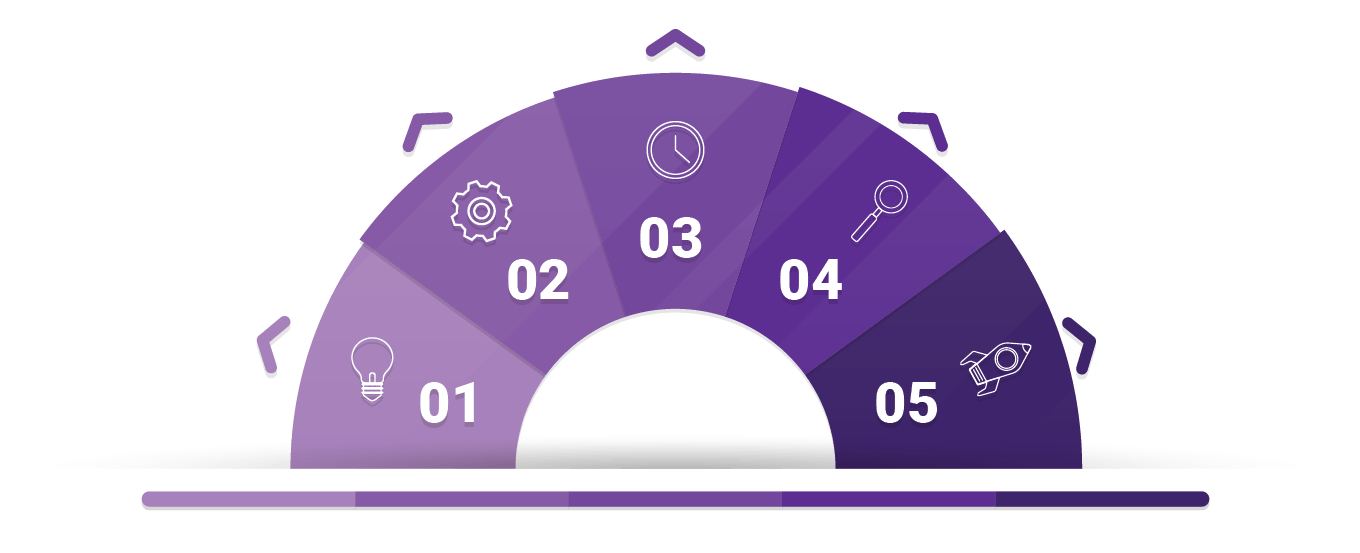
The IELTS curriculum is scientifically designed with all test formats, tips, and strategies based on the experience of the team of experienced instructors, with the main responsibility lying with the founder of WISE ENGLISH, Mr. Lưu Minh Hiển (Top graduate of the University of Manchester, UK)
Tất cả khóa học tại WISE đều được cam kết đầu ra bằng Hợp đồng, nếu học viên thi không đạt đầu ra thì được học lại miễn phí cho đến khi đạt được cam kết. Tuy nhiên, hầu hết các bạn đều đạt được đầu ra sau chương trình học.
A team of highly qualified teachers, carefully selected, dedicated, and professional, supporting students 24/7, along with the QUALITY CONTROL DEPARTMENT to ensure the best experience for students in every lesson.
REDUCE UP TO 80% OF LEARNING TIME while still achieving IMPRESSIVE RESULTS with the 6-Step Vocabulary Learning & Automatic Listening Method, based on the scientific foundation of BRAIN THINKING (NLP) and LANGUAGE (LINGUISTICS)
WISE is always among the TOP English language centers in Da Nang, and is also the OFFICIAL PARTNER of the British Council, IDP Vietnam, INTESOL Worldwide, and other major and reputable organizations.
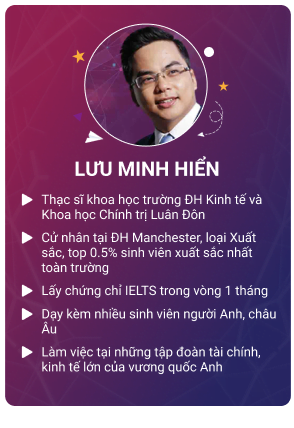
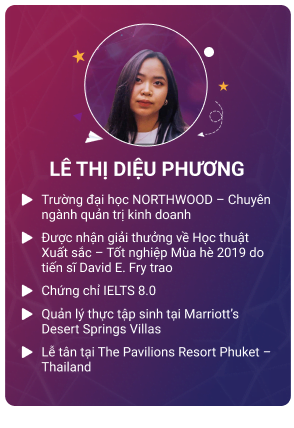
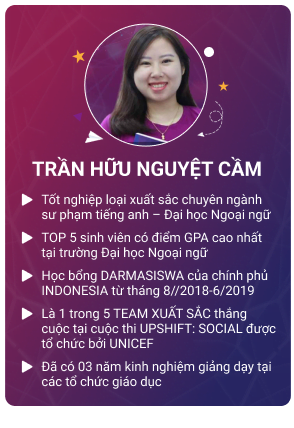
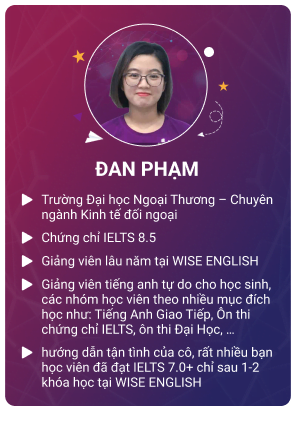






















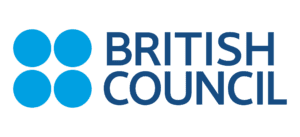





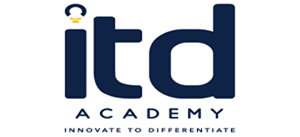

Target audience for learning IELTS:
WISE’s mission is to help young people in Vietnam change their approach to learning English through BRAIN THINKING (NLP) and LANGUAGE to master the language in the FASTEST and MOST EFFECTIVE way.
The mission story of WISE ENGLISH
Additionally, you can learn more about WISE ENGLISH through our Fanpage and YouTube channel.
Refer to the IELTS 7.0+ preparation pathway for beginners.
WISE ENGLISH guarantees results for all courses. If the promised results are not achieved, students can retake the course for free until the goal is met. However, there have been no such cases so far. (The center will provide a result guarantee agreement if the student chooses the full package with guaranteed results.
This method studies the potential and functioning of the brain in terms of memory retention and learning. Brain Thinking Science (NLP) and Linguistics research how to learn a language naturally, like a child, in order to communicate fluently.
For detailed information on the IELTS learning method, click here.